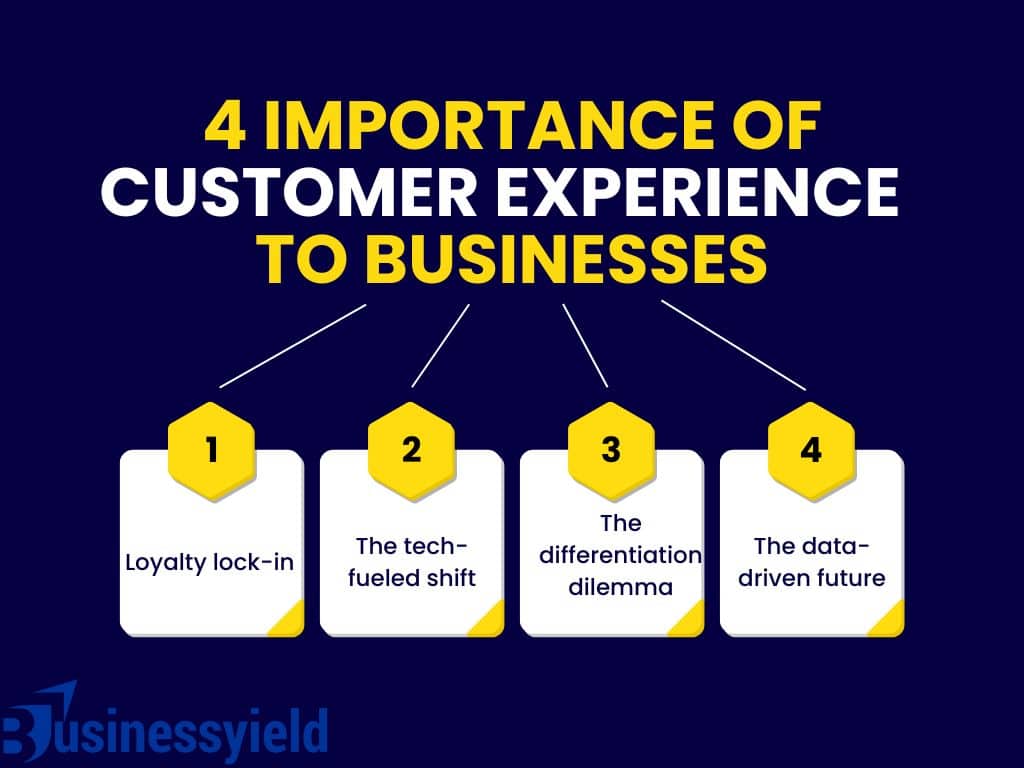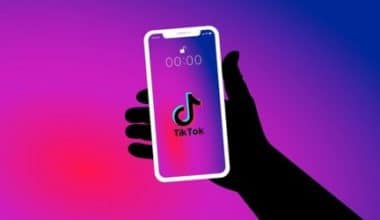Customer experience can make or break a company; however, many brands struggle to provide meaningful interactions despite their best efforts to keep up with the trends.
Organizations continue to increase their CX technology spending because executives understand how CX affects the bottom line. Customers and contact centre managers agree that interactions influence customer loyalty and that how consumers perceive the brand directly impacts the company’s revenue.
However, the modern customer experience landscape is complex. Customers are losing patience and are ready to switch to a competitor after minor mistakes, as well as yelling, swearing, or hanging up on customer care representatives. Customers are driven by emotions, while businesses are driven by profit. CX teams can bridge the gap by personalizing experiences and improving customer interactions.
Let’s explore the 7 hottest customer experience trends in 2024 and some tips to help you through this journey.
Key Points
- Customer experience (CX) refers to a customer’s entire interactions and impressions with your brand across all touchpoints and channels.
- Some customer experience trends in 2024 are prioritizing customer access to information, Omnichannel CX, Generative AI, and more.
- Investing in CX increases customer loyalty, encourages repeat business, and differentiates brands in a competitive market.
What Is Customer Experience (CX)?

Customer experience (CX) refers to a customer’s entire interactions and impressions with your brand across all touchpoints and channels. It spans all stages of the customer journey, from first awareness to post-purchase support, in order to create pleasant emotions, satisfaction, and loyalty.
In today’s competitive environment, recognizing and meeting customer needs and expectations requires a strong CX strategy. Here’s why improving the customer experience is a top priority nowadays.
Why Is Customer Experience Important to Businesses?

In 2024, competitors will be able to readily replicate your products or services, so you cannot rely entirely on your product strengths. This reality, together with a number of other compelling reasons, has made customer experience an essential component of every business’s basic strategy.
#1. Loyalty lock-in
Research indicates that 58% of US customers are willing to pay more for a superior customer experience. This demonstrates the obvious correlation between investing in CX, which increases loyalty, encourages repeat business, and lowers customer turnover. Loyal customers become brand advocates, recommending your products and services to others, resulting in organic growth and increased market share.
#2. The tech-fueled shift
As customers become more tech-savvy, the need for seamless, tailored experiences across all customer touchpoints has risen dramatically. Using technology like AI-powered chatbots and augmented reality (AR) product visualization allows businesses to provide targeted experiences that satisfy tech-savvy customers.
#3. The differentiation dilemma
In a market crowded with similar products and services, CX emerges as the major differentiator. Apple and Zappos have mastered the art of building emotional connections with customers thanks to their customer-centric approach, which has resulted in unrivalled market leadership and brand advocacy.
#4. The data-driven future
CX is no longer a subjective idea but rather a measurable metric. Advanced analytics and reporting offer important insights into customer sentiment and behaviour, allowing organizations to proactively identify and address pain points for continuous improvement and improved experiences.
Companies who continue to invest in CX should stay up to date on new market developments. Discover the top seven customer experience trends to watch:
7 Top Customer Experience Trends For 2024
Here are all the top trends in this industry and what you need to know about each:
#1. Sustainability of Client Satisfaction
A new generation of consumers necessitates new strategies for customer relations. While sustainability is becoming an increasingly important business value, organizations’ approaches to customer-centric sustainability efforts should differ for their younger customers.
To effectively connect with today’s consumers, an organization must incorporate sustainability into its identity. Customers in Gen Z and Millennials are 27% more likely to buy from a company than older generations if they see the brand is concerned about its impact on people and the environment. Even better, if the company’s product or solution is of greater quality due to long-term contributors, the brand could exceed customer expectations.
Reformation is a trendy clothing company that incorporates its commitment to sustainability into its business approach. Unlike most e-commerce sites, Reformation provides a separate section for customers to learn about their sustainability efforts. The site’s section heading is their tagline: “Being naked is the #1 most sustainable option.” We’re #2.” Along with engaging marketing, the brand explains how it provides sustainable products.
They provide their production process, material sourcing information, product care guidelines, and even sustainability reports. Reformation has gained recognition among younger generations for its commitment to social good through transparency and communication of its mission.
#2. Giving Priority to Customer Access to Information
Customers want to have control over how they interact with a brand. AI-powered chatbots provide customers with unlimited access to information via messaging. Also, optimizing search on webpages improves the digital customer experience. Businesses should provide additional self-service options for their customers, such as appointment scheduling, order tracking, and customer care bots. Allowing your customers access to this information offers them the ability to control their customer journey. Access to additional information makes your customers feel trusted, which is the foundation for Airbnb’s operations.

Airbnb enjoys high customer loyalty for a variety of reasons, including building trust, involving customers in decision-making, and cultivating a sense of belonging. The company connects strangers renting out their properties with people wishing to stay in various cities across the world. This idea seems like it could lead to disaster; nevertheless, by providing a reliable 24/7 customer support service, Airbnb maintains its customer experience. The company offers an omnichannel experience, including bots, live agents, social media messaging, in-app messaging, and 24-hour phone and email support. Additionally, the Airbnb Help Center provides a plethora of resources for customers. They can customize their experience, whether they are a guest, host, experience host, or travel administrator. Along with optimized search, the support section has blogs, FAQs, contact information, and topic-level organization.
#3. Omnichannel CX
A customer’s relationship with a business generally involves many touchpoints before the customer decides to engage with the brand. Companies can speed up this process by developing an omnichannel CX strategy, which involves interacting with their customers in multiple kinds of places, such as social media platforms, streaming platforms, e-commerce sites, and more.
It is crucial to understand customer behaviour across multiple channels. For example, brand recognition on a podcast episode is perfect for raising awareness, but how often do you stop a podcast to make a purchase? It may not be the main channel for driving the digital customer experience; instead, it may be one of several touchpoints in the customer journey. Adjust messaging to best fit multiple platforms, and alter marketing methods to provide your customers with a seamless omnichannel experience.
Disney is a company that has a consistent omnichannel strategy. Along with a distinctive logo and the phrase “The Most Magical Place on Earth,” Disney maintains the spirit of its brand across all mediums. Walt Disney, the company’s founder, aimed to provide customers with a seamless experience that emphasized family, fun, and entertainment throughout all messaging.
Today, this strategy is apparent in the My Disney Experience feature, which gives customers control over their dream Disney trip. Disney positions their messaging with a customer-centric omnichannel approach in mind, taking into account every interaction a child may have with the company. This includes movies, television commercials, in-store costumes, and in-person character experiences.
#4. Continued Investment in a Valuable Loyalty Program
The name states the benefit already: loyalty programs reward customers for continued patronage but have also been found to boost customer retention. 79% of customers are more likely to conduct business with a company because of its loyalty program. Many companies are further personalizing their programs by creating a loyalty status hierarchy to highlight their most loyal customers. Given the link between customer retention and loyalty, businesses must take proactive steps to improve their loyalty program benefits.

Sephora, a beauty retail giant, is well-known for its Beauty Insider Program. This program, which is free to join, recognizes buyers into three groups based on their annual retail spending: Insiders, VIBs, and Rouge. Each tier rewards customers for their purchases by equating points to a dollar; for example, Insiders receive one point for every $1 spent. Along with a complimentary birthday gift, all members receive free trial-sized products. As you advance up the tiers, you will receive more benefits, such as early access to new product launches, bigger discounts, additional birthday perks, makeup training sessions, and even complimentary full-sized products.
#5. Personalized Experiences with Data and Generative AI
As previously said, an emotional connection with customers is a key element of the customer experience. Companies can use data to implement hyper-personalization in their CX strategy. Enterprises can use predictive analytics from customer relationship management (CRM) systems to better personalize experiences. CRM systems give 360-degree customer data, including sales, marketing, and other services, which can be used to inform features such as product recommendations, virtual cart reminders, SMS stock alerts, and even greeting consumers by name when shopping online.
How can companies differentiate their personalization efforts to improve customer interaction? Improving hyper-personalization of the customer experience was selected as a top use case by 42% of AI decision-makers. Companies can use technologies such as generative AI to better identify trends in individual behaviour and develop personalized experiences.
AI is not new to eBay. The organization has been using technology to improve experiences for both merchants and customers. Along with their personalized shopping assistant, ShopBot, eBay has announced the launch of a generative AI-powered listing tool for sellers. eBay refers to the new tool as a “magical listing experience,” it can extract information from photographs provided by the seller to create descriptions and enhance the selling experience. Another example of how this tool works is that a seller can give their item a title and then use generative AI to get recommended categories and other information about the item. Creating a more streamlined listing process for eBay sellers.
Here is a free checklist for a well-calculated assimilation:
Customer Experience Trends.pdf
#6. Embracing New Technologies
Just as artificial intelligence can aid with hyper-personalization, it can also help companies develop new experiential marketing strategies that better align with customer expectations. According to IBV, 78% of global executives plan to incorporate generative AI into their customer and employee experiences. Businesses can build a stronger emotional connection with their customers by providing memorable experiences. Even exploring and understanding new technologies like virtual and augmented reality could help businesses create an immersive experience for their customers.
IKEA, for example, collaborated with Apple’s iOS 11 and ARkit to produce IKEA Place, which helps customers become better interior designers. The app allows users to arrange furniture virtually in their homes using AR technology on their iPhones. According to IKEA, accuracy is at 98%, allowing buyers to visualize their products in their own space before purchasing, eliminating the need to visit a store in person.
#7. Guaranteeing Data Privacy for Customers

Customers are willing to disclose personal information, especially if it means receiving real-time solutions and hyper-personalization. In fact, 50% of customers are willing to share personal information to help build a more personalized customer experience. These metrics can help a company improve its relationships, products, and customer service experiences. Customers, on the other hand, want to know how their data will be used and to have confidence that the company will protect their personal information against data breaches. Companies must clearly communicate their usage and privacy intentions to users so that they can understand how their data benefits their customer experience.
What are Customer Experience Trends?
Customer experience (CX) refers to a customer’s interactions with a company, encompassing both direct and indirect touchpoints. Businesses that prioritize the emotional needs of the buyer persona in their customer experience strategy foster great relationships.
What Is the CX Trend in 2024?
This year, businesses should keep up with breakthroughs in generative AI (genAI), which fosters transformation in digital experiences, research, and design.
What Are the 3 Main Components of Customer Experience?
Almost 80% of American consumers believe that speed, knowledgeable assistance, and friendly service are the most crucial aspects of a good customer experience.
What Are the 4 P’s of Customer Experience?
By focusing on the four P’s of customer experience in the real estate industry – product, price, process, and people – you can improve your customers’ overall experience and build positive relationships with them, resulting in increased customer satisfaction and loyalty, which will benefit your business.
What Are the 3 E’s of Customer Experience?
- Effectiveness: Customers value you because you help them complete the task at hand.
- Ease: Customers want an easy experience that is not overly complicated, confusing, or involves too many stages.
- Emotion: Customers get the positive feeling they expected.
- 10 Cutting-Edge Video Marketing Trends You Should Know 2024
- Digital Marketing Trends 2024: 10 Trends You Should Adopt Right Now
- How to Use Google Trends to Maximize Your SEO and Content Marketing
- Technology Trends: Leveraging Tools to Enhance Business Productivity






